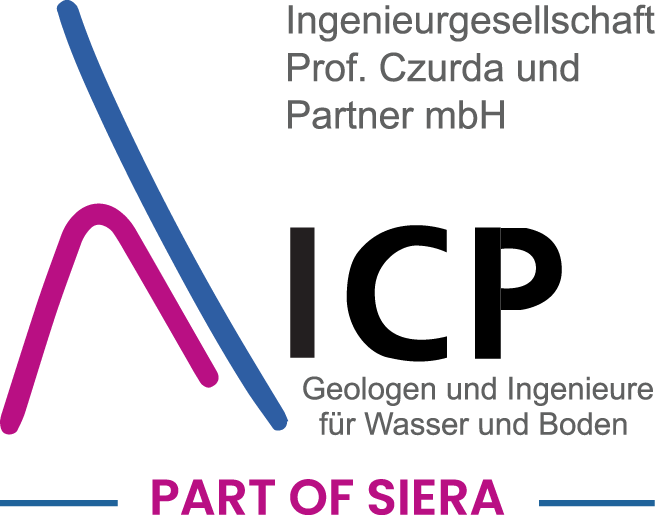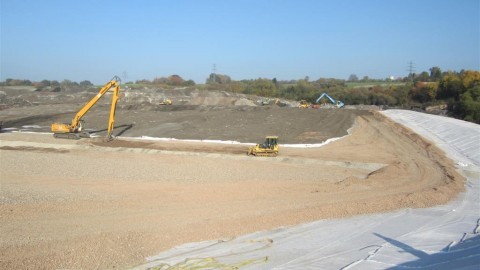Project details
Description of the project:
Neue Halberg-Guss GmbH, together with Saint-Gobain PAM Deutschland GmbH & Co. KG operates its own Hennau waste dump for the disposal of its production-specific residues. Due to changed legal requirements resulting from the Landfill Ordinance that came into force on 15 July 2009, a concept for the further residual filling of the Hennau waste rock pile was developed. For this purpose, an intermediate sealing was designed for an area of approx. 6 ha in the eastern hilltop area of the landfill. ICP was commissioned with the approval and implementation planning as well as the awarding of contracts and local construction supervision.
For the creation of the subgrade, first of all relocation and profiling work was necessary. A total of approx. 150,000 m³ of waste was removed to create the subgrade and relocated to landfill sections outside the intermediate sealing. The Hennau dump has neither a geological barrier nor a base sealing. Consequently, the following system was implemented for the intermediate sealing:
- Subgrade of the intermediate sealing, compaction to EV2 > 60 MN/m²Mineral clay sealing of 50 cm thickness in 2 layers with a coefficient of permeability kf < 5×10-10 m/s as a substitute for the geological barrier. A clay from the Assweiler clay pit was used for this purpose. A corresponding suitability test was able to fulfil the requirements of the quality assurance plan.
- PE-HD plastic sealing sheet with BAM approval of thickness d ≥ 2.5 mm
- BAM-approved sand protection sheets with a permissible overfill height of up to 40 m Final backfilling of the stockpile with simultaneous use of a surface filter made of screened track ballast of 8/32 grain size over the sand protection mat
- Surface drainage (d = 30 cm, kf ≥ 10-2 m/s)
- Filter-stable separating layer
For drainage of the sealed areas, 2/3 perforated pipes with a fluidised bed base made of PE-100 were used. The wall thickness and thus the outer diameter of the pipelines were determined within the framework of a pipe statics to be prepared. The maximum fill height above the pipelines is approx. 35 m.
The sealing surfaces were chosen with a cross slope to the seepage collectors of 3%, 4.5% and 5.5%. Drainage in the area of the sealing surface was provided via a surface drainage layer made of screened concrete rubble or 8/32 grain track ballast. A gravel trench 16/32 with a thickness of twice the outer diameter of the pipeline was installed above the seepage water pipe.
All construction work was carried out over a period of 36 months in 3 construction phases within the planned time frame. The total construction costs of € 3.5 million net were below the cost calculation of the approval planning.
Services performed by ICP:
Execution of the implementation planning, preparation and participation in the award of the construction contract to the most economical bidder, execution of the local construction management and the superstructure management, documentation of the project.
Construction time: 2008-2012


